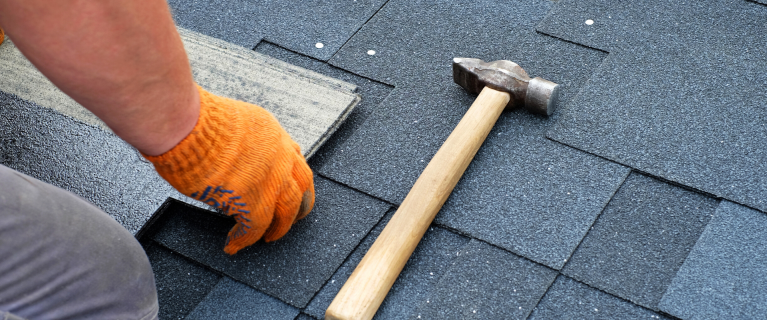Mould & Mildew
Expert advise from Onduline
Problems with lichen
Where and when the air that we breathe is highly polluted, moss and lichen struggle to survive, but where the air is clean they will survive, accordingly as the clean air act takes effect the problem of lichen on roof materials is increasing.
There is no issue with the erosion itself on a building, but the acidic releases will affect all natural and manmade roofing products including bituminous sheets, metals, lead in particular, and are known to damage the galvanisation of steel components.
Left untreated, lichen can cause damage to the colour pigmentation and resin coating to bituminous sheets causing degradation to the sheet structure, particularly in cases when moss is also allowed to build up in the corrugation bases which results in the high moisture content at this point and as a result softens and degrades the sheet structure and can reduce the service life of the roof covering, any moss on the roof should should be removed with a stiff bristled brush and the area treated as required.
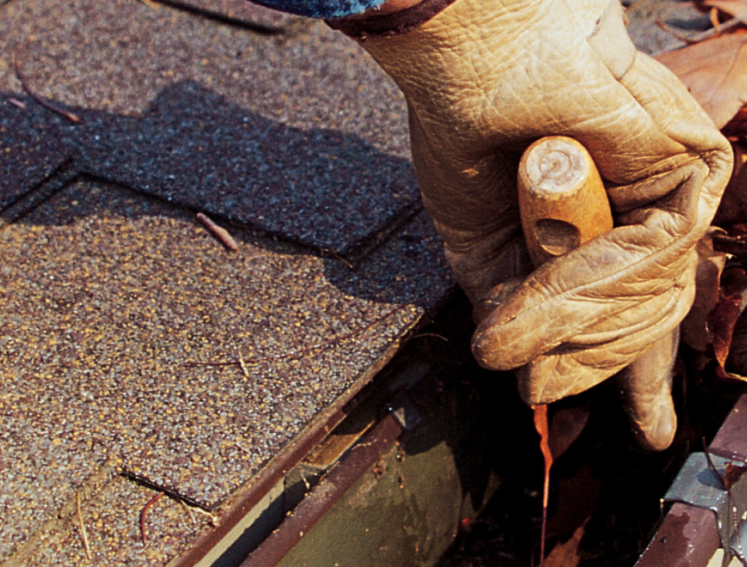
How do I treat the roof surface?
The surface can be cleaned using proprietary cleaning detergents ranging from patio type cleaners applied by hand and rinsed off with clean water using a hose, we do not recommend the use of high pressure jet washers as they can damage the Onduline sheet surface.
Alternatively an algaecide based treatment can be applied to the lichen in accordance with the manufacturers instructions. Garden centres offer a range of products for this purpose and our testing has not indicated any detrimental effect on Onduline sheets although it would be advisable to test a trial area first. These treatments take time to act as the lichen forms a strong bond with the roof surface which takes time to weaken. Wet, dry and frosty changes in weather conditions will eventually clear the white patches left on roof surfaces.
Air pressure forces are generated on the roof as wind pass over it; ‘Positive’ pressure on the windward side of the roof and ‘Negative’ pressure (suction) on the leeward side.
These forces act with high (ridge) and low level (eaves) ventilation to create convection or stack ventilation within the roof space, which will under normal circumstances expel water vapour from within the roof space restricting condensation formation. When this ventilation is not provided a warm roof structure must be provided with internal air extraction provision.
Restoration of damaged surfaces
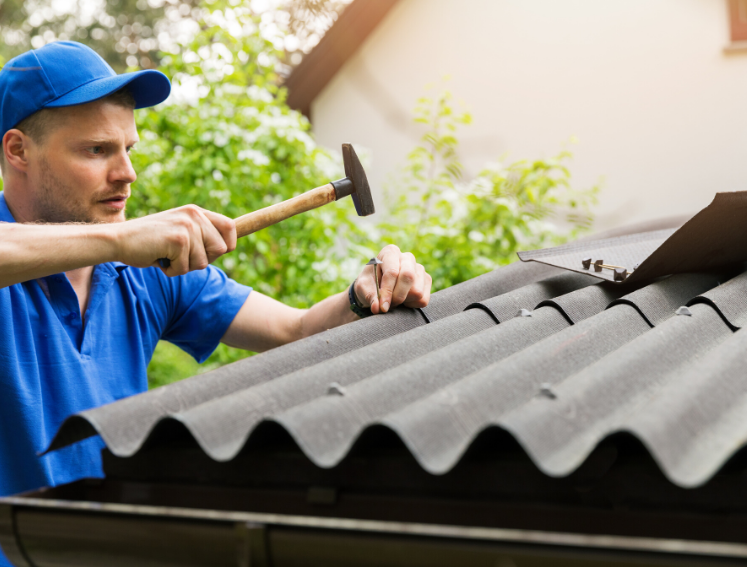
Protecting the roof
We do not recommend additional treatment to the roof apart from regular cleaning of the sheet surface. Paints such as the bituminous types used to coat felted flat roofs can be applied to
Onduline sheets, in accordance to the manufacturers instructions but as they are primarily
designed to provide a solar reflective or increased fire resistant surface, they are often silver grey in colour. Should colour be an issue water-based masonary paints can be applied, again in
accordance with the manufacturers instructions. In both cases it is advisable to apply test areas to the roof sheet to prove the effectiveness of the coating in service.
Problems with moss
Moss is a very simple plant form which does not have roots or means to collect or move water around inside its form. It therefore has to absorb the moisture directly from the roof surface, this is why it thrives in damp shady places, such as under tree cover or in gutters.
As moss requires collected nutrients draining down the roof sheet in rainwater to exist, it is associated with wet conditions on north facing roofs, or shaded roofs under overhanging trees providing moist leaf mould on which moss thrives.
Generally whilst you find lichen growing on the exposed surfaces of roofs moss prefers damp sheltered areas. Gradually Moss feeding on nutrients present in the water draining down the roof will grow and in effect build a ‘dam’ in the sheet corrugations in order to retain more moisture.
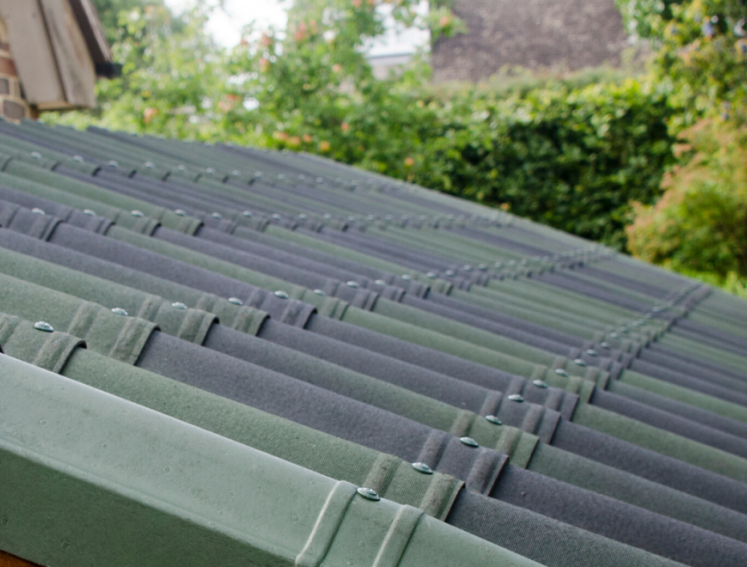
How do I treat the roof surface?
The solution to Moss on a Onduline roof is simple, just brush it off the roof and clear the gutters, a course bristled brush and trowel can be used for this purpose. The surfaces can then either be rinsed off with water using a hose; or by first treating the surface with a strong disinfectant such as Jeyes Fluid. Note: We do not recommend the use of high power jet washers.
Specialist moss surface treatments are available from garden centres containing a mixture of
Fungicide, bactericide and algicide, we do not under normal circumstances recommend the use of these products although they will not adversely effect the Onduline sheet, if they are used the manufacturers instructions must be followed.
Problems with mould
Mould is ever-present in the environment it is spread by tiny spores which float in the air. It can establish and grow on almost any receptive surface that spores land and find moisture allied to a constant temperature, between 40 and 100 degrees F.
In theory this includes about every place in a domestic situation that a damp environment is maintained from shower rooms to damp fabrics left in a badly ventilated position.
You can easily spot the most visible type of mould called mildew, which begins as a grey coating, this forms into black spots which in turn grow to form larger colonies. This is normally the fungus you notice in grout lines in a badly maintained shower, or on damp walls, and outdoors on the surfaces such as decking and timber particularly if situated in damp and shady areas.
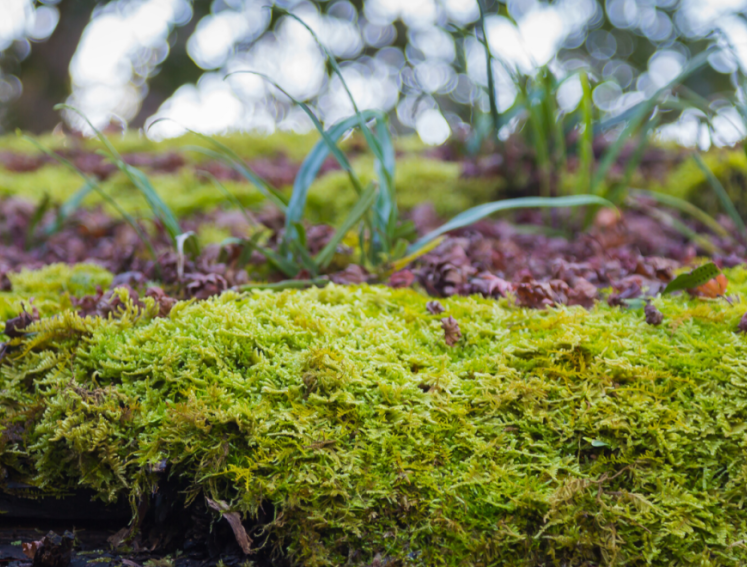
How do I treat the roof surface?
As Mildew lives on the surface of materials it does not damage structures as such, but it is often an early sign of an environment which will sustain more virulent forms of Fungus which will cause rot and serious structural decay and related damage to building structures.
Before starting the refurbishment of an effected area time should be taken to consider why the problem occurred to allow for renovating the cause of the problem. As mould is normally associated with damp conditions, consider the ventilation and insulation provision to the building’s roof area which should be provided at the ‘ridge’ high and ‘eaves’ low level. Consider the upgrading the roof specification with addition ventilation and boarding or a membrane to the underside of the roof to deny the environment mould can establish.
Caring for Onduline Roof Sheets
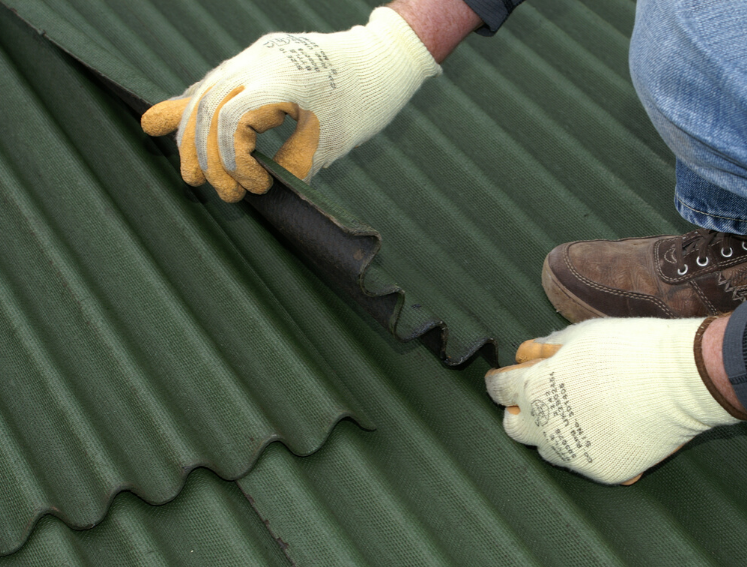
Prevention and cleaning recommendations
Onduline sheets held in exterior storage must be fully protected with tarpaulins from the elements at all times.This stops the the risk of mildew spores spreading between the sheets. This would be evident by mildew formation on both sides of the sheet. If you note any mildew present on the sheet treat the sheets in order to remove any mildew spores prior to use and allow to dry in a well vented area.
Preparation: Care must be exercised in preparing the Onduline sheets to be treated, ventilate the building and clear and prepare all surfaces in contact with the mildewed area. Next remove or protect goods or fitments below the area to be treated with a suitable tarpaulin. Finally isolate and protect any electrical goods adjoining the area to be cleaned, if in any doubt seek professional advice in making safe all electrical items. In undertaking this work wear suitable protective long sleeved overalls or old clothes, which should be either cleaned or disposed of immediately after use, it is also advisable to wear work or old shoes. Always wear protective goggles and gloves and use a suitable disposable respirator.
Cleaning process: Treat the underside of the Onduline sheets and timber surfaces in contact with the sheet with a diluted bleach solution (maximum recommended concentration of 1 part bleach to 8 parts water). Use a brush to apply this solution to the affected areas rinse off the solution with clean water after 30 minutes.
Onduline lightweight roofing solutions
Browse our full range of products to find a suitable solution for your roof project.
